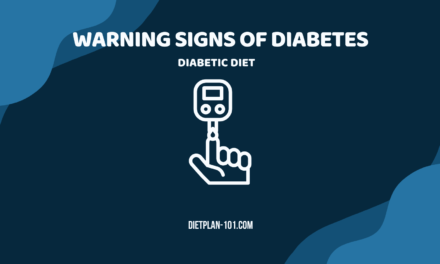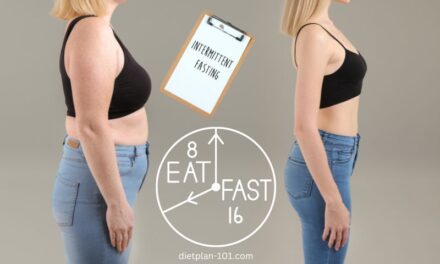Banana Calories and Your Blood Sugar: Bananas are one of the most popular fruits worldwide, known for their easy-to-peel skin, portable nature, and delicious taste. But what about banana calories and their impact on blood sugar levels? Are they safe for people with diabetes?
As someone who has seen the struggle of friends with diabetes, I am passionate about sharing accurate information about food choices for diabetics.
In this blog post, we’ll explore the nutritional content of bananas, their effects on blood sugar, and whether they can be safely consumed by those with diabetes. Spoiler alert: I believe bananas can be a part of a diabetic’s diet, but with some caveats.
Bananas: Nutritional Facts
Before we dive into the discussion, let’s get a quick overview of the nutritional content of bananas. A medium-sized banana (about 7-8 inches long) typically contains:
| Nutrient | Amount |
|---|---|
| Calories | 105 |
| Carbohydrates | 27 grams |
| Fiber | 3 grams |
| Protein | 1 gram |
| Fat | 0.4 grams |
| Sugars | 14 grams |
Bananas also provide significant amounts of essential vitamins and minerals, including vitamin C, vitamin B6, potassium, and magnesium. They are low in fat, cholesterol, and sodium, making them a heart-healthy option for most people.
Banana Nutritional Value vs Other Fruits
In the table below, we compare the nutritional content of bananas with other popular fruits, focusing on calories. All values are for 100 grams of each fruit.
| Fruit | Calories | Carbohydrates | Fiber | Protein | Fat | Sugars |
|---|---|---|---|---|---|---|
| Banana | 89 | 23 g | 2.6 g | 1.1 g | 0.3 g | 12 g |
| Apple | 52 | 14 g | 2.4 g | 0.3 g | 0.2 g | 10 g |
| Orange | 47 | 12 g | 2.4 g | 0.9 g | 0.1 g | 9 g |
| Grapes | 67 | 17 g | 0.9 g | 0.6 g | 0.4 g | 16 g |
| Watermelon | 30 | 8 g | 0.4 g | 0.6 g | 0.2 g | 6 g |
| Pineapple | 50 | 13 g | 1.4 g | 0.5 g | 0.1 g | 10 g |
| Strawberries | 32 | 8 g | 2 g | 0.7 g | 0.3 g | 5 g |
Please note that these values are approximate and can vary depending on factors such as ripeness and variety. While calories are an essential consideration, it’s also crucial to look at the overall nutritional content of the fruit, including vitamins, minerals, and fiber. By including a variety of fruits in your diet, you can ensure a well-rounded and balanced intake of essential nutrients.
Related:
Bananas and Blood Sugar: The Glycemic Index
When it comes to diabetes, understanding a food’s glycemic index (GI) is crucial. The glycemic index is a measure of how quickly a food raises blood sugar levels. Foods with a high GI cause a rapid increase in blood sugar, while those with a low GI result in a slower, more gradual rise. Diabetics are often advised to consume foods with a low GI to better manage their blood sugar levels.
Bananas have a moderate GI, ranging from 42 to 62, depending on their ripeness. This means they can have varying effects on blood sugar levels. Unripe or green bananas have a lower GI, while ripe or yellow bananas have a higher GI.
The fiber content in bananas can help slow down the absorption of sugar into the bloodstream, mitigating blood sugar spikes. However, the sugar content in bananas may still pose a concern for diabetics, especially when consumed in large quantities or alongside other high-carb foods.
In this table, we compare the glycemic index (GI) of bananas with the same popular fruits mentioned earlier. Keep in mind that the GI can vary depending on factors such as ripeness, variety, and preparation method.
| Fruit | Glycemic Index (GI) |
|---|---|
| Banana | 42-62 |
| Apple | 36 |
| Orange | 40 |
| Grapes | 59 |
| Watermelon | 72 |
| Pineapple | 66 |
| Strawberries | 41 |
Please note that a low GI is considered to be 55 or less, a moderate GI ranges from 56 to 69, and a high GI is 70 or more. Including low and moderate GI fruits in your diet can help maintain stable blood sugar levels, especially for individuals with diabetes.
The Key to Enjoying Bananas for Diabetics: Portion Control and Balance
In my opinion, diabetics can enjoy bananas as part of their diet, but the key is moderation and balance.
Here are some tips for incorporating bananas safely into a diabetic meal plan:
- Choose less ripe bananas: As mentioned earlier, less ripe or green bananas have a lower GI compared to ripe or yellow bananas. They also contain more resistant starch, which can help regulate blood sugar levels and promote gut health.
- Watch portion sizes: Instead of eating a whole banana, consider having half a banana or cutting it into smaller portions to spread throughout the day. This way, you can still enjoy the taste and nutritional benefits without causing significant blood sugar fluctuations.
- Pair with protein or healthy fats: Combining bananas with a source of protein or healthy fats can help slow down the absorption of sugar and further minimize blood sugar spikes. Try pairing bananas with nuts, seeds, Greek yogurt, or nut butter.
- Monitor your blood sugar: Everyone’s body reacts differently to different foods. It’s essential to keep track of your blood sugar levels and adjust your diet accordingly. If you find that bananas cause significant spikes in your blood sugar, it may be best to limit or avoid them.
- Don’t forget other low-GI fruits: While bananas can be a part of a diabetic’s diet, it’s essential to include a variety of low-GI fruits, such as berries, cherries, apples, and pears, for a well-rounded and balanced diet.
- Be mindful of other high-carb foods: When incorporating bananas into your meal plan, be aware of the overall carbohydrate content of your meals. You may need to adjust the intake of other high-carb foods to maintain proper blood sugar levels.
The Bottom Line
Bananas are nutritious and delicious fruit that provides essential vitamins, minerals, and dietary fiber. Although they have a moderate glycemic index and contain natural sugars, I believe that diabetics can still enjoy bananas in moderation with proper portion control and balance.
By choosing less ripe bananas, pairing them with protein or healthy fats, and monitoring blood sugar levels, diabetics can safely include bananas as part of a balanced and varied diet. However, it’s always best to consult with a healthcare professional or diabetes educator before making significant dietary changes to ensure you’re making the best choices for your individual needs.
So, go ahead and enjoy that banana – just be mindful of how it fits into your overall meal plan and remember that moderation is key.
Banana Calories: Frequently Asked Questions Unpeeled
How many calories are in a banana?
A medium-sized banana (about 7-8 inches long) contains approximately 105 calories. However, calorie content can vary depending on the size of the banana.
Are bananas high in calories compared to other fruits?
Bananas have a moderate calorie content compared to other fruits. They have more calories than fruits like apples, oranges, and watermelon, but fewer calories than fruits such as grapes and pineapples.
Can bananas help with weight loss?
Bananas can be a part of a healthy weight loss diet, as they provide essential nutrients, fiber, and natural sugars for energy. However, it’s crucial to consume them in moderation and maintain a balanced diet with a variety of fruits and vegetables.
Are bananas a good source of energy?
Yes, bananas are a good source of energy due to their carbohydrate content, which provides the body with fuel for physical activity and brain function. They also contain natural sugars that can offer a quick energy boost when needed.
How does the ripeness of a banana affect its calorie content?
The calorie content of a banana remains relatively stable as it ripens. However, the type of carbohydrates in the banana changes, with resistant starch converting to simple sugars. This can affect the glycemic index and blood sugar response but does not significantly impact the overall calorie count.
Can diabetics eat bananas?
Diabetics can eat bananas in moderation, as long as they monitor their blood sugar levels and consider factors such as portion size and the banana’s ripeness. It’s essential to maintain a balanced diet and incorporate various low to moderate GI fruits for optimal blood sugar control.
How many calories in a banana bread slice?
The number of calories in a slice of banana bread can vary greatly depending on the recipe, ingredients, and serving size. On average, a slice of banana bread (about 60 grams or 2.1 ounces) can contain approximately 200-250 calories. This can change based on factors such as added sugars, fat content, mix-ins (like nuts or chocolate chips), and the use of alternative ingredients (e.g., whole wheat flour or sugar substitutes).
Related: 5 Amazing Banana Pudding Recipes
Source:
- American Diabetes Association (ADA): https://www.diabetes.org/
- Centers for Disease Control and Prevention (CDC): https://www.cdc.gov/diabetes/index.html
- World Health Organization (WHO): https://www.who.int/health-topics/diabetes
- Glycemic Index Foundation: https://www.glycemicindex.com/







